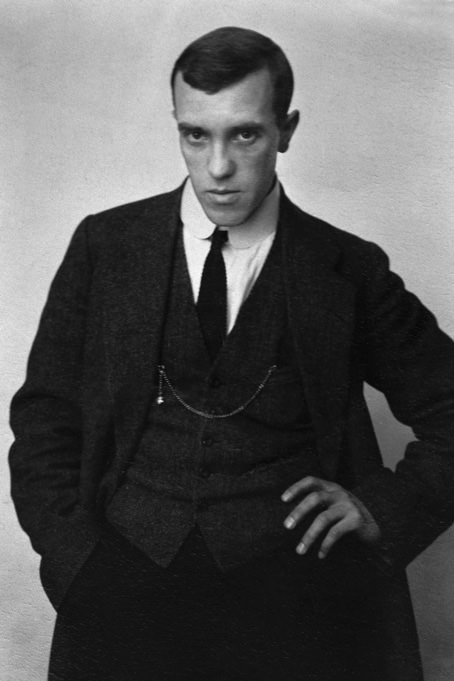

The reproduction of these works without the express written consent of the owner of the works is prohibited.
DownloadPark Motif with a Fountain
Like the painting from Villa Comunale, here Konrad Mägi uses a perspective where part of a fountain is found on the right side of the composition while a tree-lined alley leads to the left and into the heart of the picture. The motif for this work is located near the main entrance to the Borghese Gardens near Villa Borghese in Rome. This is the seahorse fountain, Fontana dei Cavalli Marini, from the 18th century, on a thoroughfare of the same name leading to the park. Mägi lived not far from the Estonian Embassy and quickly grew familiar with the gardens.
His paintings from Rome and Naples were his first and last foray into depicting parks. We know of at least three park motif paintings (in addition to sketches) and this is surprising in a number of senses. For one thing, Mägi doesn’t mention parks in his letters from Italy but notes that old churches left an impression on him. Secondly, Mägi never showed any interest in his earlier letters or works in park landscapes, focusing on nature devoid of humans. Yet in Rome and Naples, he suddenly focuses almost programmatically on park motifs. Why?
His avoidance of the park motif to this point can be seen from several aspects. For example, it could be pointed out that in the late 19th century, which coincided with Mägi’s childhood, parks were associated with manor houses, and thus symbolized the class divide, power and foreign influence. The Estonian nation-building movement linked the ethnos with untamed nature (forests were a major motif) for a number of reasons. Therefore, the relative foreignness of park motifs could have stemmed from the political views that surrounded Mägi in his youth and childhood. On the other hand, a park as a well ordered and rational combination may have just been uninteresting for Mägi’s personality, as his restless mind constantly sought out irrational, exalted, transcendent, mysterious, dynamic, also religious experiences. The park theme was not as suitable for expressing these as various moments from wild nature. In his earlier letters as well, Mägi expressed suspicion about rational phenomena, writing that “… the brain’s intelligence is the everyday, work and sweltering heat, its mathematics and logic, but the spirit is a rare feast day…”. Parks were associated above all with the urbanist world and although Mägi’s good friend Aleksander Tassa painted three paintings of the park at Versailles in 1912, he was an exception, as other Estonian modernists living and working abroad also focused on nature motifs, not on city views.
Why Mägi suddenly started painting park motifs in Rome and Naples is not completely clear. A different spatial perspective characterized all three paintings and maybe Mägi was taken in by the long alleys leading to the depths of the park, which allowed the pictorial space to be constructed differently than in the past. Parks undoubtedly seemed exotic, especially due to their fountains and sculptures. Mägi was always drawn by the exotic, but he never depicted any of the parks in Paris, St. Petersburg or Oslo. Until now, Mägi had almost never placed people in natural settings but depicting park motifs, he sketched anonymous human figures on a number of occasions. Still, it is hard to see a painterly fascination with the possibility of depicting humans, nor has he put special emphasis on either mysterious atmosphere (instead of dim areas under the trees, the paintings are very well lighted, historical sculptures were not accented, fountains are depicted only partly in frame, etc.) or idealized geometry. Thus, the most likely explanation is that Mägi was interested in a different manner of spatial depiction.
The reproduction of these works without the express written consent of the owner of the works is prohibited.

